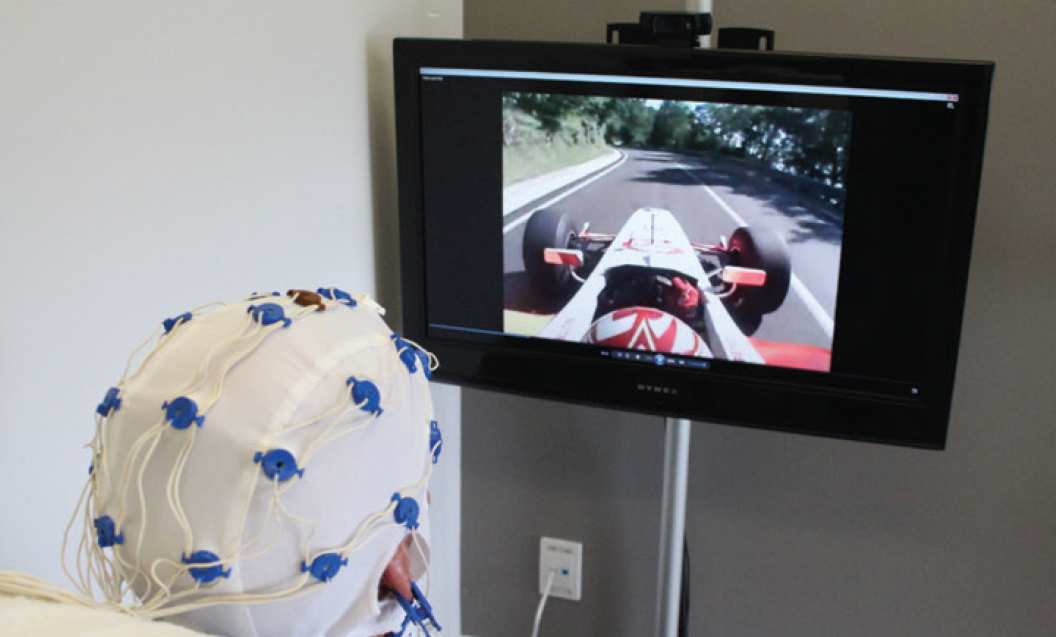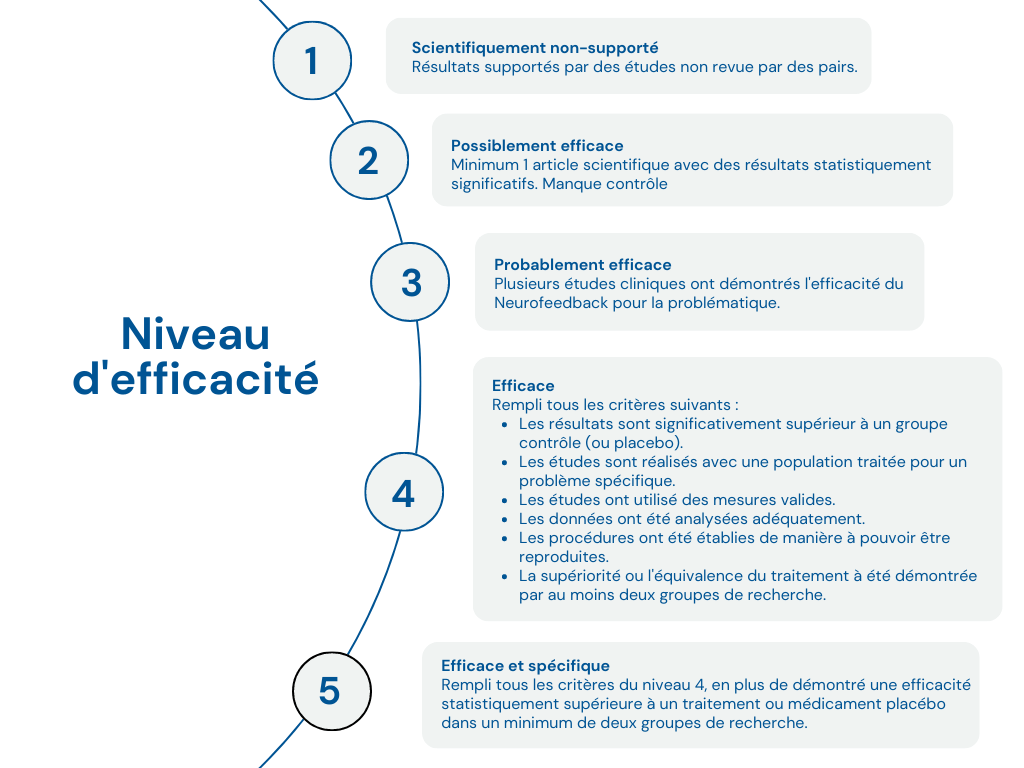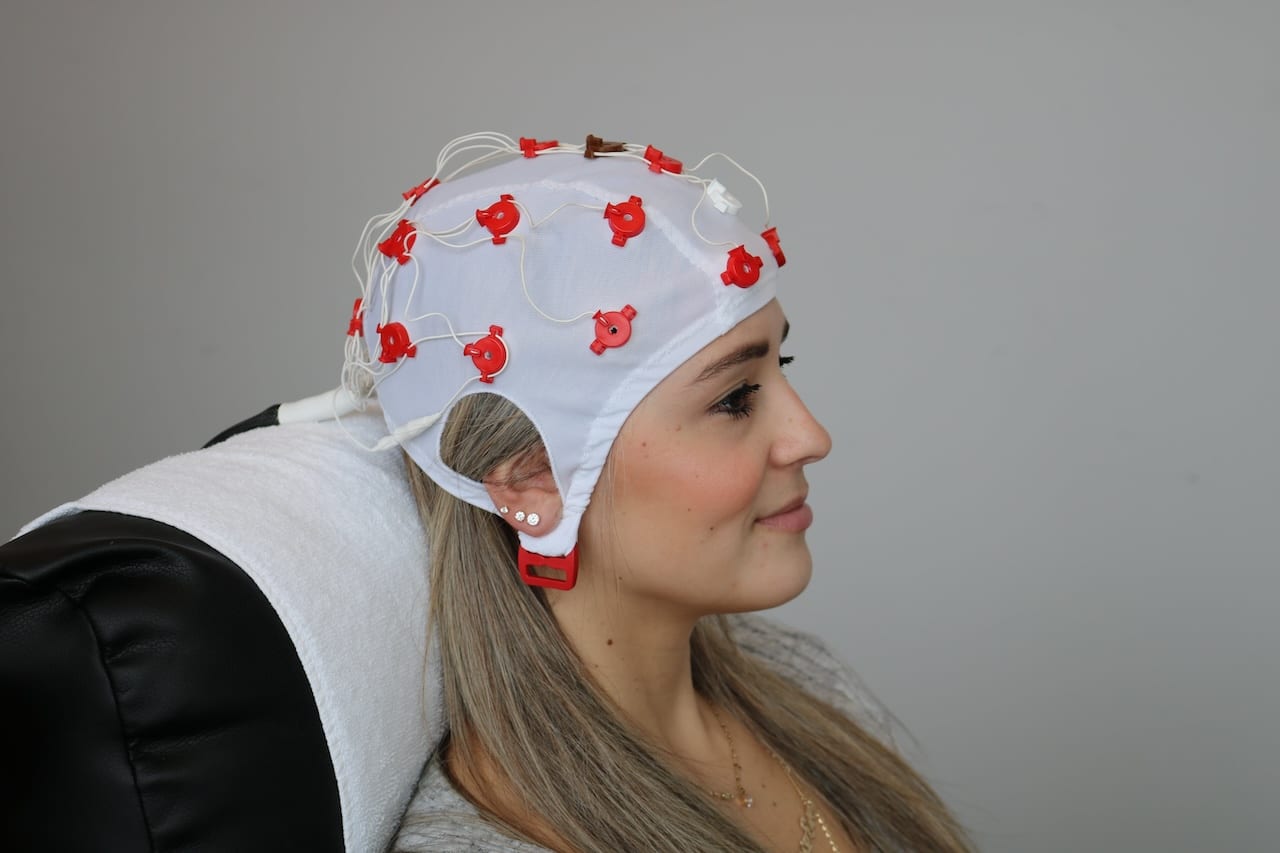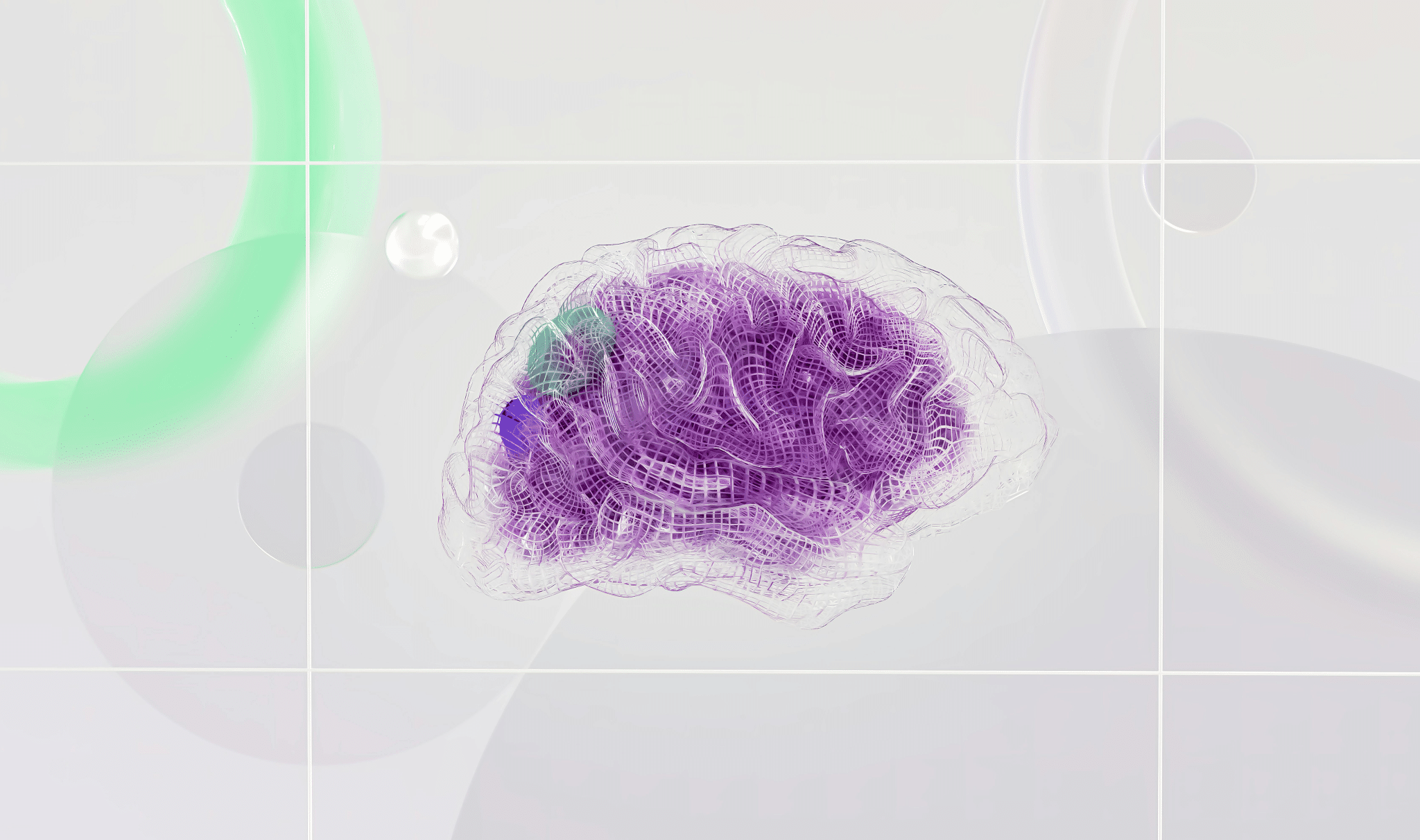Improve Your Cognitive Performance with Neurofeedback
Neurofeedback at Neuroperforma offers an innovative approach to alleviating a wide range of symptoms associated with neurological and psychological disorders while enhancing cognitive performance.
Leveraging cutting-edge technologies, our specialized clinics are committed to improving the quality of life for our patients. This non-invasive method (which has already helped thousands of people) can help you regain balance and well-being.
Neurofeedback is a therapy rather than a treatment because it uses the brain’s self-regulation abilities to balance its electrical activity without taking medication. It is a non-invasive and natural approach that requires regularity similar to a sports training regimen and complements conventional medical treatments without replacing them.
What is Neurofeedback?
Neurofeedback, also known as EEG biofeedback, is an innovative real-time technique for measuring and modifying brain activity. With sensors placed on the scalp, electrical activity is measured in real-time, allowing the brain to be rewarded at the right moment, thus modifying electrical frequencies and the difficulties experienced.
This method, based on the principles of neuroplasticity and learning theories, is used to treat a variety of disorders, ranging from depression to ADHD, including anxiety disorders, without the use of medication.
At Neuroperforma, we use Neurofeedback to help our patients achieve an optimal state of well-being, leveraging the natural power of their brain to self-regulate.
History and Foundations of Neurofeedback
Neurofeedback emerged in the 1960s. In an experimental setting, Dr. Barry Sterman placed an electrode on the top of several cats’ heads and measured in real time a brain frequency of 12 to 15 Hz called SMR. When the cats’ brains increased this brain frequency, a mechanism gave them food. Quickly, these cats’ brains began to produce more of this SMR wave frequency, demonstrating that we could indeed change brain activity with this conditioning. These results were published in the journal Brain Research in 1967 but he could not foresee the scope of his discovery.
Later, Dr. Sterman was approached by NASA for another project involving EEG. The fuel vapors from space shuttles caused seizures in astronauts. Dr. Sterman then began his experiments by exposing his cats to the fuel. As expected, the fuel caused convulsions in the majority of his cats. But curiously, about ten of them were immune. That’s when he realized that the cats that had been previously trained in Neurofeedback were the ones who did not have seizures. Could Neurofeedback then treat epilepsy?
That’s when Dr. Sterman performed the same experiment with epileptic individuals. He placed an electrode on the top of their head and when the individual increased the SMR waves, a green light turned on to indicate they were doing the right thing. The individuals’ brains then increased their SMR wave production and a 65% reduction in seizures was noted. This was a great discovery that led several researchers to take an interest in Neurofeedback for various pathologies.
How It Works
Here’s how a typical Neurofeedback session unfolds, step by step:
- Setting Goals: Every Neurofeedback journey begins with a free 30-minute consultation with one of our advisors to understand your specific goals and needs better.
- Measuring Brain Activity: The next step is evaluating your brain activity (EEGQ), conducted by a qualified medical electrophysiology technologist, lasting 30 to 45 minutes. The results of this evaluation will target the brain circuits to train in Neurofeedback to create a personalized program specifically for your needs.
- The session begins by placing a helmet with electrodes on your head. These non-invasive and painless sensors allow for the real-time measurement of your brain activity through electroencephalography (EEGQ).
Note: At Neuroperforma, the client meets with the psychologist or neuropsychologist for a brief interview. From there, we can begin the selection of programs.
- Data Analysis and Report Delivery: After the initial evaluation of your brain activity, our team proceeds to a detailed analysis of the data obtained and the interpretation of the results. This crucial phase allows us to deeply understand your brain activity and determine the specific areas to target during treatment.
Then, our specialists (psychologists and neuropsychologists) will write a comprehensive report based on the results of this analysis. This report will be used to create your Neurofeedback training program.
Once the report is written, we organize a second meeting (by phone) with you and our specialist. During this meeting, you will receive the evaluation results as a personalized report. This report will include a detailed analysis of your brain activity, links with your specific issues and goals, relevant recommendations, and a detailed proposal for a particular Neurofeedback training program for your case.
- Brain Training with Positive Feedback: We use the same helmet during the evaluation. The trainer starts the program, and when your brain activity reaches the set goals, you immediately receive positive feedback (a reward, which will be an image). This reward system encourages your brain to reproduce beneficial brainwave patterns, thus reinforcing desired behaviours.
- Repeating the Training: The trainings are based on a 12-session program at a rate of 1 to 3 sessions per week… Through this method, based on learning theory and operant conditioning, your brain gradually learns to adopt healthier and more effective activity patterns.
Neurofeedback is a proven and effective method validated by hundreds of scientific studies. By actively stimulating your brain, this approach improves your cognitive performance and achieves inner balance in a lasting way.
Applications and Benefits of Neurofeedback
Management of Psychological Disorders: Neurofeedback can offer you a new approach in the treatment of neurological disorders, such as depression, anxiety disorders, eating disorders, etc. By training your brain, you give it the ability to self-regulate, which reduces terrible habits and symptoms. This non-invasive method represents a valuable alternative or complement to medication treatments, with the advantage of being free from undesirable side effects.
Improvement in Concentration and Attention: It’s a practical solution if you’re struggling with concentration or attention problems, such as ADHD. By training to stabilize and optimize your brainwaves, you can significantly improve your ability to concentrate and stay focused over extended periods. This method helps you strengthen your cognitive control, resulting in better performance in your daily and professional activities.
Reduction of Stress and Anxiety: If you’re often faced with stress or anxiety, Neurofeedback can provide significant relief. This technique helps you have a calmer mind and regulate your emotional reactions by promoting more relaxed brain states. By learning to behave better, your brain maintains a state of calm and serenity, thus reducing anxiety symptoms, managing intrusive thoughts, and improving your overall well-being.
Improvement in Sleep: A key to solving sleep problems, including insomnia or nighttime awakenings. Training to modulate your brainwaves promotes a state conducive to deep and restorative sleep. It can help you regulate your sleep cycles, allowing you to fall asleep more quickly and enjoy better quality sleep.
Improvement in Cognitive and Sports Performance: Neurofeedback also offers the possibility to improve your cognitive performance, whether for studies, work, or daily activities. By optimizing your brainwave activity, you can increase your memory capacity, speed up your information processing speed, and strengthen your creativity. This method helps you fully exploit your intellectual and sports potential, making you more efficient and adaptable.
Management of Chronic Pain: For those suffering from chronic pain, Neurofeedback can offer a path to relief by teaching your brain to reduce the perception of pain. This technique helps you modify the brain activity patterns associated with pain, thus contributing to reducing its intensity and improving your quality of life. By decreasing the intensity of your response to pain, you can regain daily comfort and greater autonomy.
Why Choose Neuroperforma for Your Neurofeedback?
Choosing Neuroperforma for your Neurofeedback journey means opting for excellence and innovation. Thanks to the latest 19-electrode Neurofeedback equipment, we can improve results while working more intensely.
Our team of specialists is highly qualified and dedicated to providing an exceptional experience.
By combining clinical expertise and a patient-centred approach, Neuroperforma stands out as a leader in Neurofeedback, committed to helping you achieve lasting improvement in your well-being.
Start transforming your life with Neurofeedback at Neuroperforma today.
The first step in Neurofeedback at Neuroperforma is an initial assessment. This includes interviewing a psychologist or neuropsychologist to understand your situation and goals. A medical electrophysiology technologist then records your brain activity using an EEG (electroencephalogram).
The collected data is then analyzed by the psychologist and technologist, who produce a written report detailing your brain activity and its connection to your issues.
A second appointment with the psychologist allows for discussing the assessment results and proposing a personalized neurofeedback training plan.
The duration of the Neurofeedback approach at Neuroperforma varies from person to person. Each training protocol consists of a minimum of 12 sessions. After the EEG assessment, a recommendation of 3 to 5 protocols may be made, for example:
- A protocol for anxiety (12 sessions),
- A protocol for concentration (12 sessions),
- A protocol for emotion management (12 sessions).
The first beneficial effects are typically observed around the halfway point of a protocol after 5 to 6 training sessions. The final choice of protocol is made through a discussion about the client’s priorities and the results obtained.
A Neurofeedback session at Neuroperforma lasts about 50 minutes:
- During the session, an electrode cap is placed on your head to capture your brain activity in real time.
- Neurofeedback works on the principle of reward.
- For example, if the goal is to increase the activity of a specific brain circuit, as soon as your brain activates that region, a reward is given—in the form of a sound (heard through the headphones) or a video image that starts playing on the screen in front of you.
- If the activity of that region decreases, the reward stops.
- During a session, around 2,000 rewards can be given.
- At Neuroperforma, psychologists who are members of the Ordre des Psychologues du Québec, assisted by electrophysiology technologists, supervise the sessions.
While at-home practices, such as the Talk with Frida method, are less effective and different from in-clinic training, Neuroperforma stands out in using Neurofeedback equipment with 19 electrodes. This allows analysis, customization, and training of the brain at 2,400 locations in 3 dimensions, unlike some establishments that use one or two-electrode systems for training, which reduces the effectiveness and speed of results.
Trained and certified health professionals, such as psychologists and neuropsychologists, practice neurofeedback. At Neuroperforma, our practitioners have in-depth expertise in neuroscience and Neurofeedback techniques, ensuring safe and practical sessions.
File opening – $25
This non-refundable fee is dedicated to opening your file.
Phase 1 – Initial interview with the professional (psychologist) and detailed assessment of your brain activity (EEGq):
Your journey will begin with an in-depth interview as well as a detailed assessment of your brain activity, at a rate of $750. These results will guide us in creating a personalized program adapted to your situation.
Phase 2 – Tailor-made protocol to achieve your goals:
Subsequently, you will begin one of the protocols specially designed according to your objectives. Based on a program of 12 brain training sessions, at a frequency of 1 to 3 sessions per week depending on your availability and that of the clinic. Expect a cost of $170 per training session (example: $170 x 12).
Note that most private insurance companies cover part of the costs and all of the training sessions. In addition, it is possible to request a quote from our specialists.
We sincerely thank you for your interest in our services!
To book a free consultation, we invite you to click here
No. The electrodes only capture the signals emitted by the brain. They act like antennas. No signal, waves, or stimulation is sent to the brain. The helmet is only used to measure electrical activity in real-time to know when to reward the brain and thus guide the brain toward the correct behaviour.
Neurofeedback trainings usually have no side effects. However, it is customary to sometimes feel an inevitable fatigue or headache in the hours following the training, considering the brain work done during a session.
This usually resolves relatively quickly. Neurofeedback involves a reorganization of brain networks towards an organization approaching norms.
It remains possible, but extremely rare, that this progression towards normal may be associated with specific signs that
Many insurance companies cover part or all of the costs of assessment and training. Check with your insurance company for details.
Since you will be under the care of a psychologist or neuropsychologist, psychological receipts are issued for the training sessions. The receipt for the EEG evaluation is signed by an EPM technologist.
Source: Evidence-based practice in Biofeedback and Neurofeedback, 3rd Edition, 2016
It has been shown that the benefits obtained with Neurofeedback are usually long-lasting and permanent. We can even observe that these new brain capacities continue to improve in the months following the end of Neurofeedback training. A study published by Joel Lubar showed that improvements were maintained even 10 years after the end of Neurofeedback training.
Traditional systems analyze and train one place at a time (the size of a $ 1 coin) on the surface of the brain. The 19-electrode system that Neuroperfoma uses can read, analyze and train 2400 locations at a time. It also allows to see in a 3 dimensional way and promotes communication between different regions of the brain.
Train 1 player or the entire team:
We now know that the brain works in networks. That is, it is not only a region of the brain that is responsible for performing a function, but it is often several regions that will work together to achieve it. It’s like a team! For the team to be effective, it is necessary that each player has an adequate level of activity (hyperactive or hypoactive players will decrease the effectiveness of the team). In addition, the communication between the players must be effective, but above all it is essential.
Traditional systems only allow analysis and training of only one player at a time and it must absolutely be located on the surface of the brain (the more central regions of the brain cannot be analyzed or trained). Moreover, they do not allow to analyze and train the communication between the players.
In the end, equipment using 19-electrodes is much more expensive and requires more expertise from the people who operate it. On the other hand, for the clients, the results are much faster, effective and the number of pathologies with which we can intervene is much greater.
If you have more questions about neurofeedback, please consult our neurofeedback FAQ.






